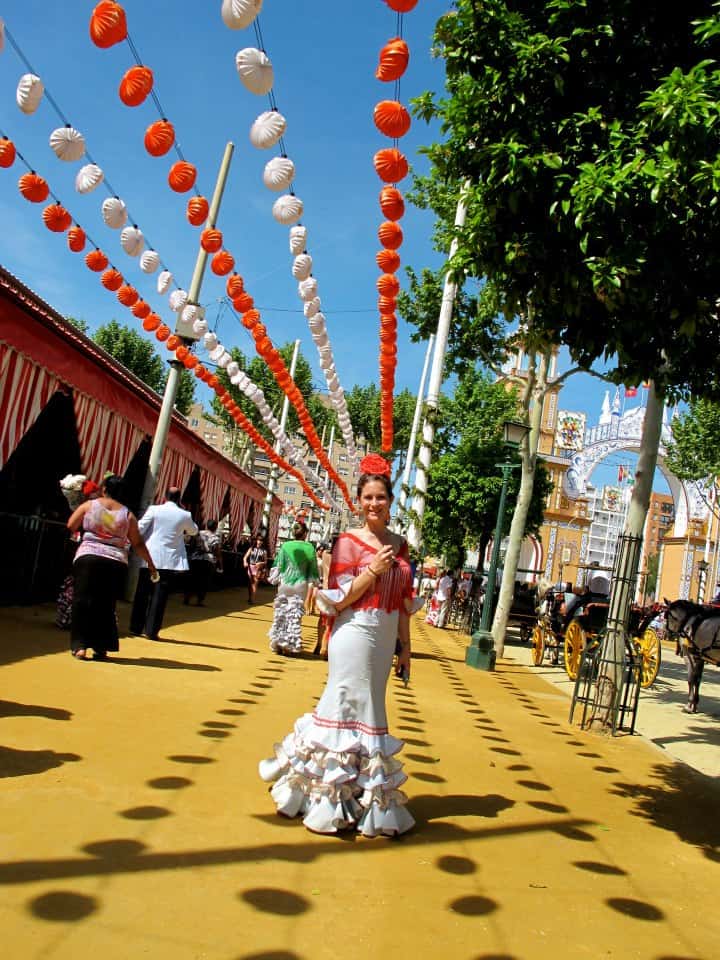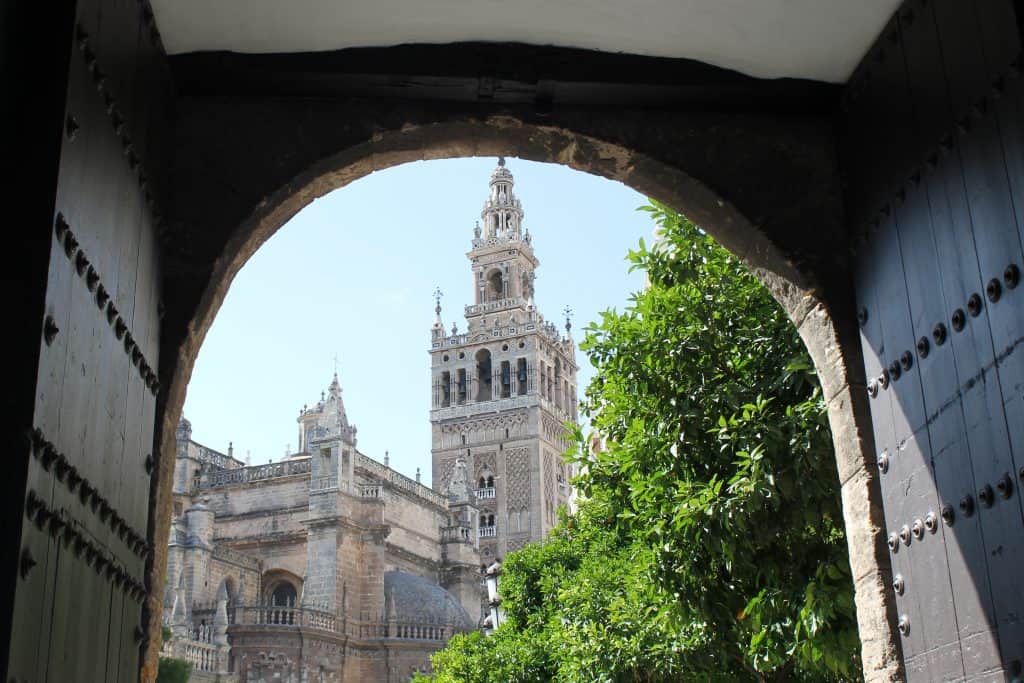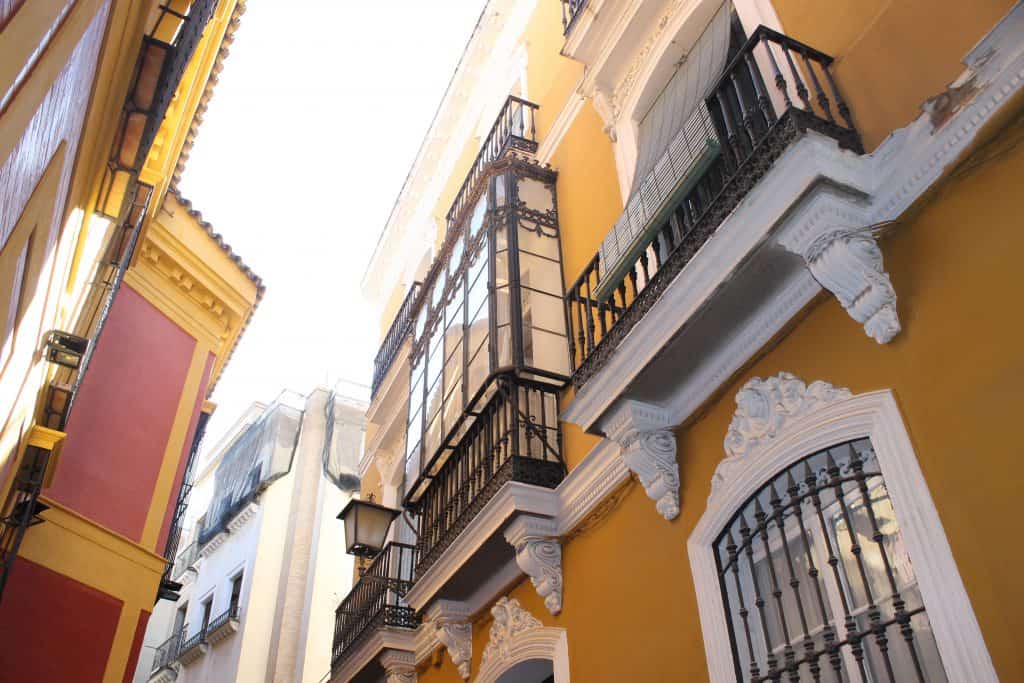Last Updated on May 17, 2022 by Sarah Wilson
The Cost of Living in Seville, Spain
When I first moved to Seville, the capital of Span’s southernmost region, I was fresh out of college and starting work as an English teacher. My stipend from the local government didn’t even reach 800 USD a month, but I was able to live comfortably in a shared apartment with two girls my age, go out for beers and tapas a few times a week and take advantage of long weekends to travel around Europe.
Seven years on, I’m now a homeowner and starting a business, and taking a serious look at my finances. Long gone are the days when I’d opt for cheap but bountiful tapas and turn off the shower between lathers, but costs are rising a bit in Seville. The city boasts plenty of history, views and great weather, and it’s one of Spain’s more economical cities, making it extremely popular for expats.
Rent and Utilities
The majority of my paycheck is put directly into the three-story house I just bought with my fiancé. We live in a 145 meter square house (1560 square feet) with a two-car garage in the gorgeous little neighborhood of Triana, about 20 minutes walking from the city center, and put in $795 (637€) towards our mortgage each month – just about what I earned when I came to Spain!
See also:
- What Does it Cost to Live for a Month in Anchorage, Alaska
- What Does it Cost to Live for a Month in Penang
- What does it Cost to Live for a Month in Beijing?
For a two-bedroom apartment in the center of town, expect to pay upwards of $500 plus utilities (about 400€) for a rental. The general rule of thumb is, the further from the center you are, the less you‘ll pay. Many of the homes in the city center are shabby chic (and may need some renovations or a blind eye) and do not have an elevator.
For a house this size, we typically spend $125/100€ in electricity, $37/30€ for 10MB of Internet and $18/15€ for water, plus several city taxes for the property itself. When renting, many of these costs come included in what’s known as the ‘comunidad,’ or general building upkeep, which can range from $25 – $62 (20-50€) a month.
Phone and Internet
Most people in Spain no longer have landlines, opting instead for mobile phones and Internet connections. Incoming calls and texts are free, and wi-fi hotspots are increasingly common around town, as well. Low cost carriers Simyo or Yoigo have basic calling plans for less than $18/15€ a month, but I have an all-inclusive plan with Vodafone, which costs me $40/32€ a month and give me unlimited calls and messages with 2MB of Internet.
At home, we have Orange for our wireless connection and TV bundle, and it costs $38/30€ a month. No OnDemand here, and Spanish TV is pretty dismal!
Groceries
Food lovers will love living in Seville, where many people still do their food shopping at markets and specialty stores, skipping the supermarket all together. Because Spain cultivates produce, meat, fish, cheese and wine, grocery costs are low and food is fresh. Expect to pay $100 to $125 (80-100€) per person each month, plus an extra $12.50/10€ for cleaning products.
Each week, we make one big purchase at the supermarket, which is cheaper than the market around the corner from our house. We’ll often get fruit, vegetables and eggs from a vendor inside the local market, and buy our bread daily for $0.62/0.50€. Beer, wine and spirits are slightly cheaper than they would be in the United States.
Transportation
Cars are not needed if you’re living in Seville – not only are they expensive and it’s difficult to find parking, but the center of town is extremely walk able, and public transportation will get you practically everywhere you want to go, whether in town or beyond.
You can obtain a free senior’s pass for the buses, trams and subway system by proving you’re registered with city hall. If you’ve yet to hit 65, a monthly unlimited pass costs $44/35,30€. Taxis have established rates by hours, festival days and during festivals, though trips around town are rarely more than $12.50 (10€).
Entertainment and Extras
It’s commonly said that a sevillano’s living room is in the street, and thanks to excellent weather, there are always people out in the street around town. Glasses of beer and wine are cheap ($1.37 and $3.12 respectively), and one can easily have a meal of two or three tapas out with a glass of wine for less than $12.50 (10€) a head. Mixed drinks, called ‘copas,’ are about $7.50, or 6€, each.
Breakfast and snacktime are an important part of the day. A complete breakfast – toast with a topping, coffee and a glass of orange juice – or an afternoon ‘merienda,’ consisting of coffee and a pastry, are about $3.75/3€ each.
While Spain boasts many big clothing labels, like Zara and Desigual, clothing is more expensive here than in the US. Dry cleaning, however, is comparable.
Government healthcare is subsidized and usually paid by the employer, though expats not on the ‘seguridad social’ plan will have to prove they have health care in their country of origin. Pharmaceutical items are usually subsidized, though special medication may not be available for purchase, or could be a big expense – check with a physician before making plans to come to Spain.
Popular forms of entertainment in Seville include catching a film ($10/8€), traveling to a nearby beach or the mountains, or simply people watching with a glass of sherry in hand. Seville also boasts a number of world-class museums that are free on certain days for residents. Spanish classes at reputable schools can cost as little as 5€ an hour, so there’s no excuse to not be able to order yourself a snack at a bar!
Compared to bigger cities like Madrid and Barcelona, life in Seville is not only cheaper, but more relaxed and with better weather. Though it’s got a sizeable foreign population, Andalusia’s capital city retains a significant amount of Spanish culture and language, and you’d be living in a city that has seen Visigoths, Moors, Romans and even Christopher Columbus! This magical city captivates with “the air as soft as that of Seville in April, and so fragrant that it was delicious to breathe it,” its architecture and its tradition.
This is a guest post by Cat Gaa who turned down a job in radio and turned up in Spain, where she quickly adapted the siesta lifestyle, in 2007. An English teacher by evening, she also blogs about adapting to expat life at Sunshine and Siestas and runs a consulting business, COMO Consulting.










